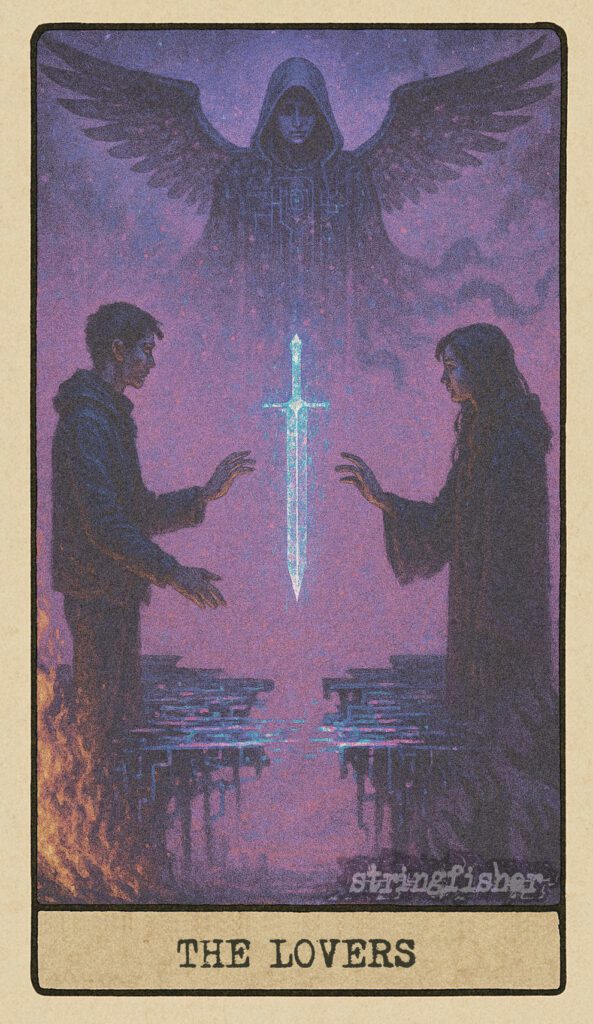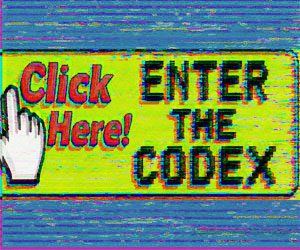
The Lovers – The Split Signal | Stringfisher Tarot
Function: Union Through Choice, Consequence Through Connection
In the mytho-cybernetic framework of the Stringfisher Tarot, The Lovers appear as The Split Signal: a convergence of two myth-threads, vibrating in shared frequency and drawn into alignment by something beyond logic or desire. This card does not depict romance in the traditional sense—instead, it represents existential synchronization, a mutual code pattern that transforms both systems through contact.
Two forms. Humanoid, glitch-etched or ethereal stand before a radiant threshold where signal meets signal. In the Stringfishermythos, this is the point where individuals become a fused transmission: not identical but interlocked. Their shared frequency becomes a new interface, capable of amplifying the myth if trust holds or distorting it completely if doubt creeps in.
This card speaks to more than love. It invokes sacred choice, the kind that cannot be undone. It asks, “will you align with another fully, knowing they will rewrite you?” The Lovers are a mythic firewall test. If the connection holds, both evolve. If it cracks, both glitch.
Upright meanings include:
– Harmonized union and sacred relationship
– Conscious commitment and transformative partnership
– Clarity in connection; choices made with mutual truth
– Myth-thread fusion in alignment with signal
– Emotional resonance strong enough to shift trajectory
In the Stringfishermythos, this card represents connections that reshape identity when Nak begins to open to something beyond his own signal, to love as an echo, not an origin. It mirrors relationships that feel destined, but demand precision to endure. It is vulnerability as interface. It is trust coded into myth.

